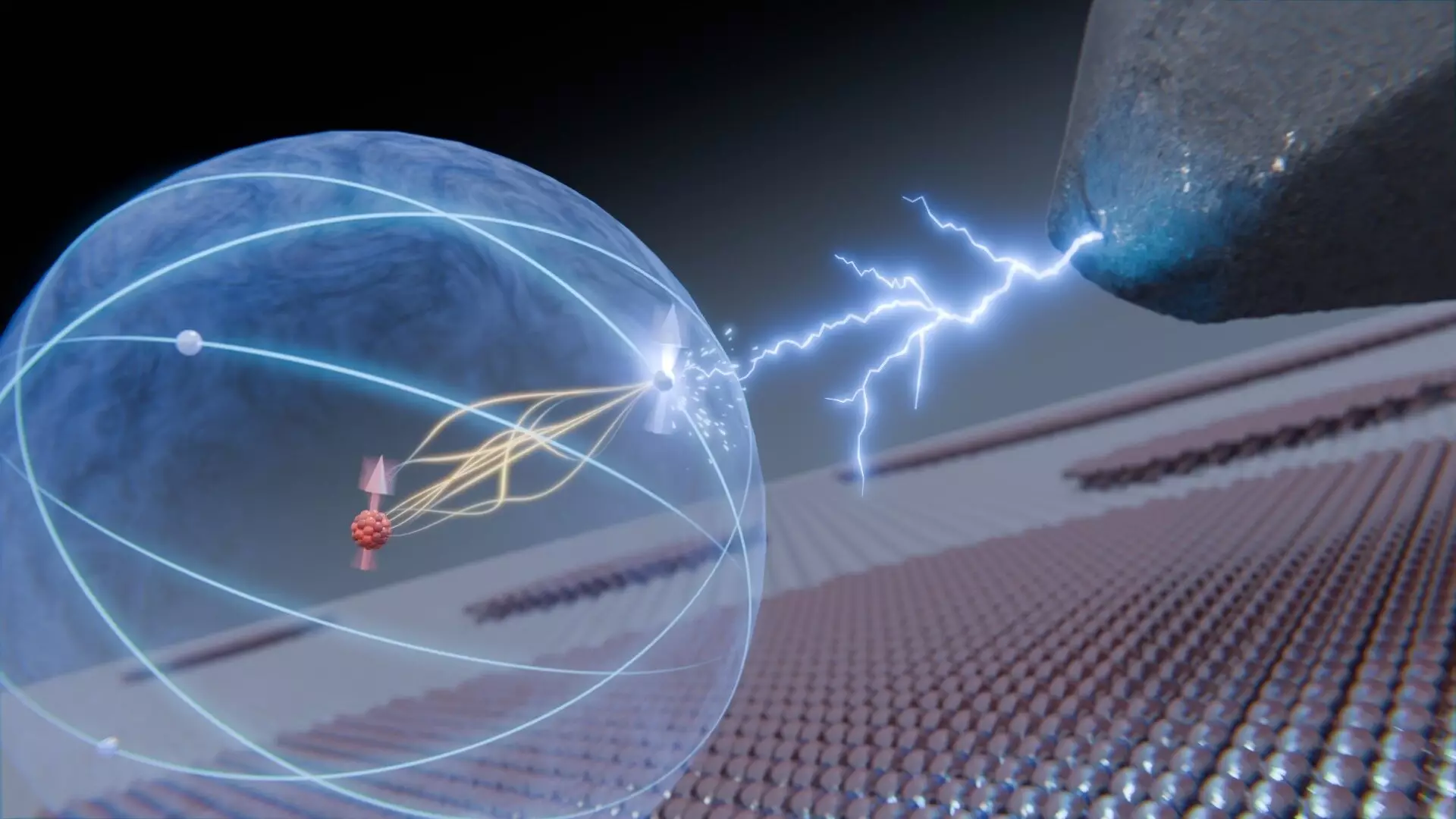Recent groundbreaking research from Delft University of Technology in The Netherlands has unveiled a path towards controlling interactions at the atomic level. Researchers have successfully orchestrated movement within the atomic nucleus, thus propelling forward our understanding of quantum information storage. The crucial component of this study is not merely the interaction itself, but the potential implications of these findings for future quantum technologies.
At the heart of this discovery lies a singular titanium atom, specifically the Ti-47 isotope, which was chosen for its unique properties. This particular atom possesses a neutron deficit compared to its more abundant counterpart, Ti-48, resulting in a magnetic nucleus. The interplay between the atomic nucleus and its surrounding electrons is delicate, yet pivotal; the study highlights how a minute “hyperfine interaction” can allow the nucleus to align with the electronic spin. This phenomenon, while theoretically simple, poses substantial experimental challenges due to the subtlety of the forces involved.
Lukas Veldman, who was instrumental in this research, underscores the complexity of accurately manipulating such minute interactions in a laboratory environment. The weak hyperfine interaction, which is sensitive to precise magnetic fields, necessitates exceptionally rigorous experimental conditions. By carefully adjusting these parameters, the researchers managed to exert control over an electron’s spin state using a voltage pulse that nudged it out of equilibrium. This manipulation allowed both the electron and nuclear spins to oscillate coherently, effectively encoding a strand of quantum information—a reality closely aligned with the predictions laid out by physicist Erwin Schrödinger.
The implications of this research are profound. The fact that the nuclear spin is isolated from external disturbances offers a unique opportunity for long-term quantum information storage. While modern quantum systems struggle with environmental interference, the nuclear spin’s inherent stability makes it a promising candidate for secure quantum data preservation. As demonstrated in this study, the quantum entanglement between the nucleus and electron proves that no information is lost during their interactions, suggesting that larger quantum systems could be built on this principle.
The researchers involved in this initiative view their findings not merely as a leap in quantum physics, but as a philosophical reassessment of mankind’s ability to manipulate the building blocks of matter. As Sander Otte articulates, the experiment epitomizes the control humans can exert over phenomena at scales unimaginable until now. Such advancements may not only revolutionize our approach to computing and information storage but also expand the boundaries of our understanding of quantum mechanics.
The exploration undertaken at Delft University heralds a new era in quantum research, where controlled manipulation at the atomic level could pave the way for innovative technologies and deeper insights into the nature of our universe.

